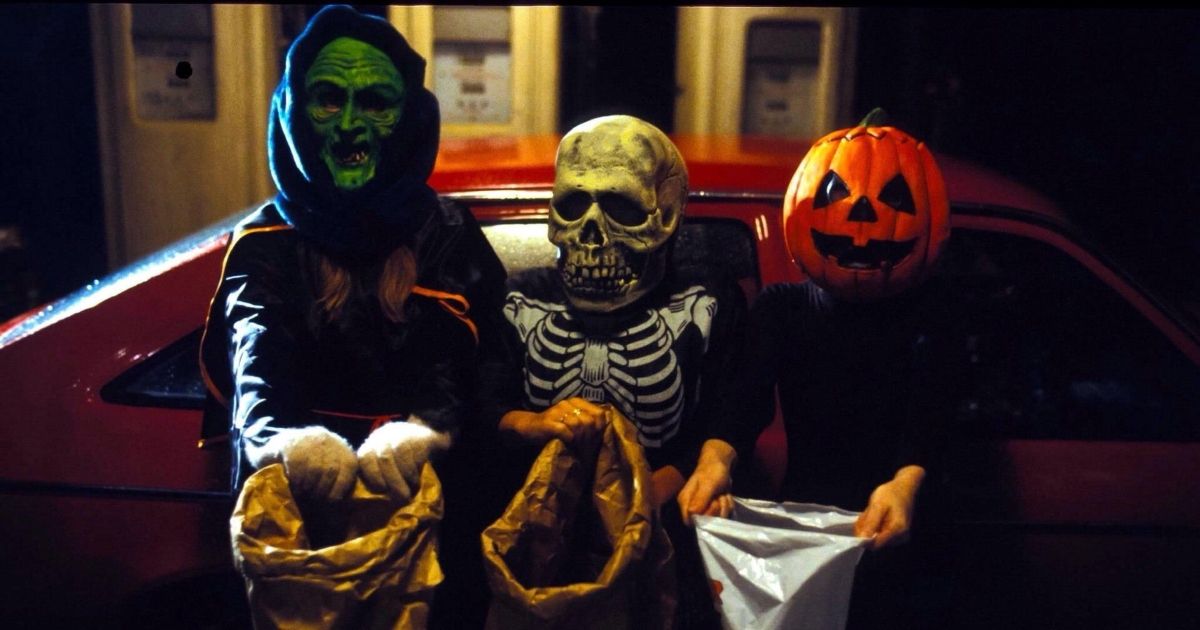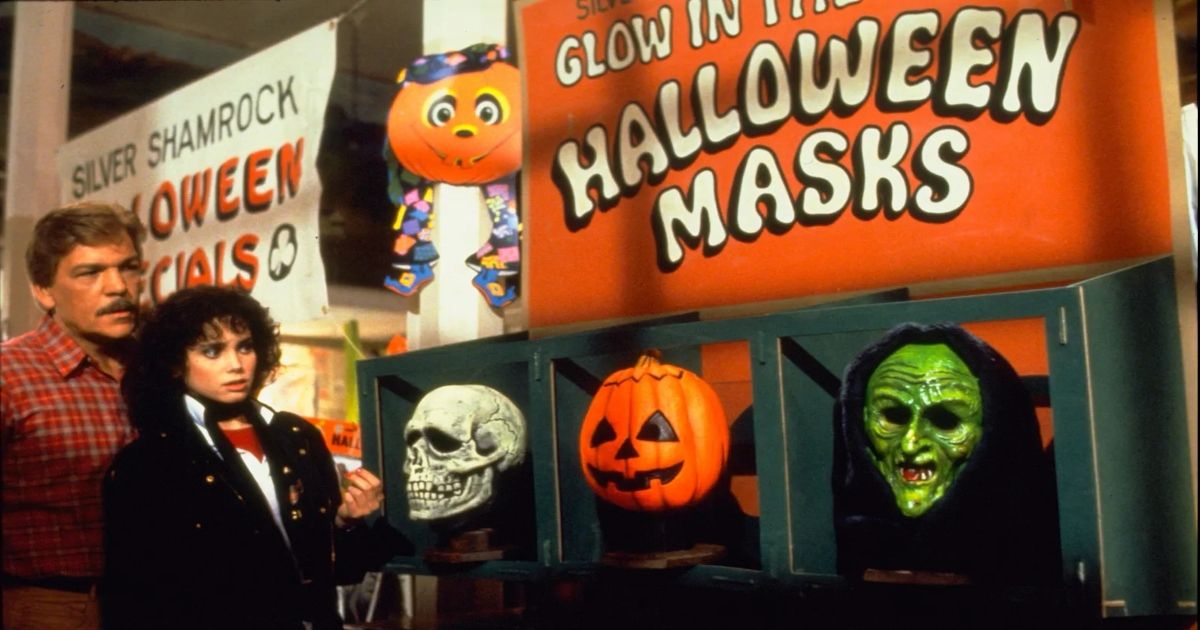John Carpenter wisely made a film for the superstitious holiday season back in 1978. The premise of a motiveless killer came from a similar 1974 holiday horror film, Black Christmas. Thus, Michael Myers was spawned from Hell and Halloween reached infamy. A sequel propelled the man behind the mask into a franchise riddled with ludicrous complications. For a psychotic homebody, it sounds like Michael would be right at home, except on the night of Halloween III: Season of the Witch.
The third film in the series possibly holds the most contention. The title (borrowed from George A Romero's 1973 film, Season of the Witch) alone misleads fans of the first two films to believe their favorite slasher survived his fiery fate. His unfinished business is replaced by a more mystical presence: mask manufacturer Conal Cochran (Dan O'Herlihy) of Silver Shamrock Novelties. Instead of terrorizing Laurie Strode (Jamie Lee Curtis), you have Dr. Dan Challis (Tom Atkins) making the rounds at the hospital where he discovers there is no cure for rituals. Michael Myers turned the killer-in-the-night trope into a staple, but Halloween III amplified the terror of that theme for the series.
The Night No One Comes Home
Halloween III is an extended, sadistic science fiction horror short film. Its inception was intended to make the franchise an anthology series, like Night Gallery or The Twilight Zone. The script was a joint effort between British science fiction writer Nigel Kneale and director Tommy Lee Wallace, who added the gore. Viewers got a twisted version of The Halloween Tree. Children are pawns for an occultist who knows how to manipulate the masses with technology and entertainment. His android workers and minions do his dirty work while he hides behind the allure of Halloween time.
Ignoring the fact that we're in Santa Mira, California (the same fictional town in Invasion of the Body Snatchers) instead of Haddonfield, Illinois, and Michael Myers does not exist as a physical threat, Cochran is a convincing evil without being a carbon copy. He takes advantage of witchcraft and the ancient paganism of the Gaelic festival, Samhein, popular in Irish folklore. The myth sees the practice of sacrifices among large feasts, bonfires, and burial grounds to invoke the Otherworld and revere one's dead kin. Of course, Cochran manipulates these origins with pieces from Stonehenge, another peculiar anomaly, and artifact with strange origins.
Watch the Magic Pumpkin!
Too much candy gave poor Little Buddy a sugar rush. Maybe he was jamming out to John Carpenter's spooky soundtrack or Smashing Pumpkins? The reason for his rotten pumpkin head is Silver Shamrock's Halloween masks. Cochran gave every child a mind-killing earworm due to microchips fitted with Stonehenge fragments hidden in plain sight. The televised commercial promoting his "Big Giveaway" and the sale of his masks has a jingle that acts as a transmitter to activate them. The masks deteriorate and materialize into bugs, snakes, and other plague-like vermin.
That jingle is a copyright-free version of "London Bridge Is Falling Down" (a song some believe is about human sacrifice) which goes, "Happy, happy Halloween! Halloween! Halloween! Happy, happy Halloween! Silver Shamrock!" If the mask didn't kill Buddy, the song would've sent him running mad to a psych ward under Dr. Loomis' care. The audacity of banking off of the sensationalism of the holiday season, matched with the motiveless yet malicious mysticism of Cochran out of a duty of tradition, is just as terrifying as Michael Myers.
A Halloween Special
Without the Haddonfield slasher, Halloween III does feel like it belongs to an anthology film. Even Michael Myers' pseudonym of The Shape sounds like a villain out of Creepshow or The Outer Limits. Fans object to calling this an installment in the Halloween series simply because they feel their main murderer deserves to be his own evil entity atop an ominous and unstoppable perch. Besides the first Halloween being televised in this anthologized universe, there is a second connection to Halloween II.
In the second film, a pirate-costumed boy is at the Haddonfield Memorial Hospital with a razor blade stuck in his mouth, having suffered the urban legend of tainted candy. This Halloween sadism is capitalized on in Halloween III with Cochran (a pirate in his own way) and his plot for human sacrifice of Santa Mira's population of children. The third installment was no more a departure than it was a haunting introduction to what the series could be.
An anthology was a new attempt to explore every figment of the holiday, and the change of pace, while surprising, was still welcome. Like Cochran said, "Do I need a reason?" With that much uncertainty and concern for safety while trick-or-treating and celebrating Halloween, the franchise in itself is a form of that fear of uncertainty. Giving Michael Myers that much dominion over the spooky season seems silly to argue about. There are still many monsters to choose from (just like the multiple endings, one featuring the screams of dying children!) In the spirit of Halloween, the series is like picking poison. When you get a vial of Halloween III, all it asks for is sweet as candy: put on your masks, watch the magic pumpkin (there is nothing wrong with your television set), and in the words of Dr. Challis, "STOP IT!"



.jpg)
-candy.jpg)